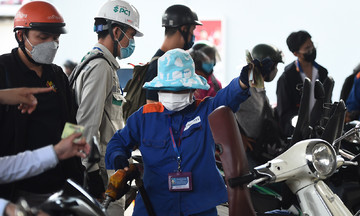In a draft amendment to Decree 29/2025, the Ministry of Finance has proposed reorganizing the tax system to align with the two-tiered local government model and the current organization of provincial administrative units. The effective date is projected to be 1/7.
Specifically, the Ministry proposes converting the current 20 regional tax branches into 34 tax departments at the provincial and centrally-managed city levels. Simultaneously, the 350 district tax teams are also proposed to be converted into corresponding units under local tax departments.
The Ministry of Finance stated that the restructuring aims to ensure uniformity within the sector and conforms to the principles of administrative organization at the provincial and district levels.
 |
Tax officials. Photo: GDT |
Tax officials. Photo: GDT
Since 1/3, the General Department of Taxation (Ministry of Finance) has transitioned into the Tax Department, operating under a three-tiered model, including 12 central departments, 20 regional tax branches, and 350 district tax teams.
However, according to the Ministry of Finance, the regional tax branch model has presented numerous operational and personnel management challenges. For instance, after the arrangement by regional or inter-district areas, tax agencies manage vast, dispersed areas, with some regions exceeding 30,000-40,000 km2, and the distance from the furthest point to the main office in most areas is over 100 km.
The workload of regional tax agencies has also tripled or quadrupled. Consequently, in areas without a main office, consultation and coordination with local authorities in directing and implementing tax loss prevention measures have become difficult.
The Tax Department is a specialized unit, organized vertically, with branch levels allocated over 37,000 civil servant positions. According to the Ministry of Finance, the number of staff in some regional branches is very large, with the highest reaching 4,000. With a wide management area, managing civil servants and employees is also a challenge. They can spend two to three hours, or even more than four hours, commuting by personal vehicles. Meanwhile, public housing and other travel support conditions, such as shuttle buses and accommodation expenses, are not guaranteed. Merging provincial and city tax departments into regional tax branches has led to a situation of both surplus and shortage of office space.
In fact, after implementing the new organizational structure, approximately 4,500 people from tax agencies at all levels applied for voluntary redundancy under Decree 178, equivalent to over 10% of the sector's staff. Cao Bang, Bac Kan, Yen Bai, Lao Cai, and Dien Bien are among the localities where the number of tax officials applying for leave exceeds 30%.
In addition to reorganizing the tax system, the Ministry of Finance has also proposed restructuring regional statistics and social insurance branches to align management with provincial administrative units. It is recommended that 63 Statistics Branches be reorganized into 34 provincial and city Statistics Departments, a reduction of 29 units. At the same time, 35 regional Social Insurance offices will be converted into 34 provincial and city Social Insurance offices (a decrease of one unit).
The Ministry also proposes merging some specialized units within the Ministry. For example, the State Budget Department will merge with the National Economic Synthesis Department, as both perform tasks related to balancing, allocating, and managing the state budget. The merger is expected to increase the effectiveness of strategic advice, avoid overlap, and streamline focal points.
Phuong Dung












